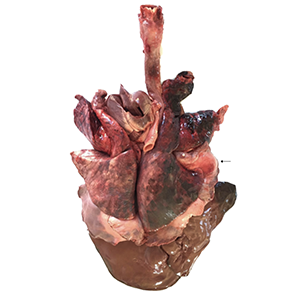Intradiaphragmatic abscesses in a wild boar (Sus scrofa): Inspective implications based on anatomopathological evidences

Submitted: 27 December 2021
Accepted: 11 April 2022
Published: 20 September 2022
Accepted: 11 April 2022
Abstract Views: 750
PDF: 247
HTML: 12
HTML: 12
Publisher's note
All claims expressed in this article are solely those of the authors and do not necessarily represent those of their affiliated organizations, or those of the publisher, the editors and the reviewers. Any product that may be evaluated in this article or claim that may be made by its manufacturer is not guaranteed or endorsed by the publisher.
All claims expressed in this article are solely those of the authors and do not necessarily represent those of their affiliated organizations, or those of the publisher, the editors and the reviewers. Any product that may be evaluated in this article or claim that may be made by its manufacturer is not guaranteed or endorsed by the publisher.

 https://doi.org/10.4081/ijfs.2022.10346
https://doi.org/10.4081/ijfs.2022.10346



